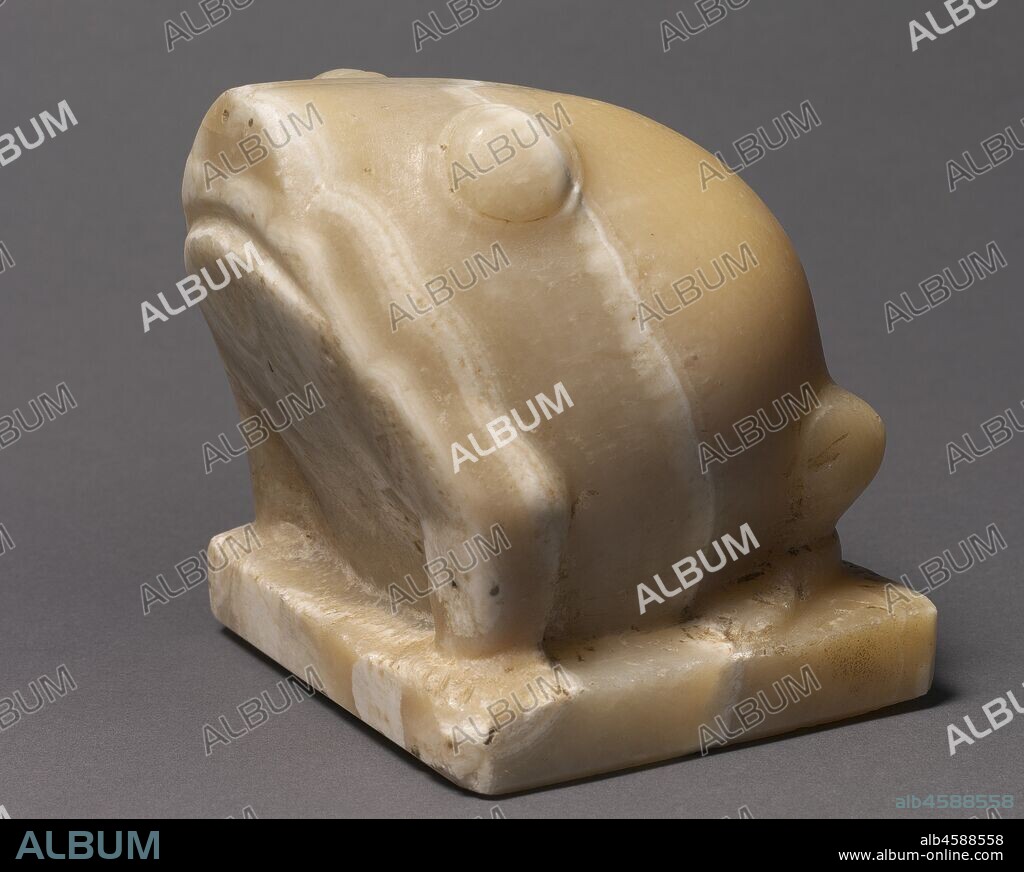alb4588558
Statue of Heqat, the Frog Goddess, c. 2950 BC. Creator: Unknown.

|
Add to another lightbox |
|
Add to another lightbox |



Buy this image.
Select the use:

Title:
Statue of Heqat, the Frog Goddess, c. 2950 BC. Creator: Unknown.
Caption:
Statue of Heqat, the Frog Goddess, c. 2950 BC. During the Predynastic period statues of animals are much more common than those of humans. This statue of a frog stands at the beginning of a great tradition of animal sculpture in Egyptian art. The sculptor has shown great sensitivity to the natural banding of the stone, using it to enhance the roundness of the animal's form. Small frogs, mostly of faience, are among the most common votive offerings deposited at early temple sites. The frog's exact religious significance in the Predynastic period is unknown, but in later times it was most often identified with Heqat, the goddess who assisted at childbirth.
Credit:
Album / Heritage Art/Heritage Images
Releases:
Image size:
3890 x 3112 px | 34.6 MB
Print size:
32.9 x 26.3 cm | 13.0 x 10.4 in (300 dpi)
Keywords:
2950-2573 BC • 3100-2950 BC • ARCHAIC PERIOD • CLEVELAND MUSEUM OF ART, THE • EARLY DYNASTY 1 • EGYPT • EGYPTIAN ALABASTER • LATE NAQADA III PERIOD • NEGADE PERIOD • PRE-DYNASTIC PERIOD • PREDYNASTIC PERIOD • PREHISTORY • SCULPTURE • TO EARLY DYNASTIC PERIOD • TRAVERTINE (EGYPTIAN ALABASTER) • TRAVERTINE
 Pinterest
Pinterest Twitter
Twitter Facebook
Facebook Copy link
Copy link Email
Email
